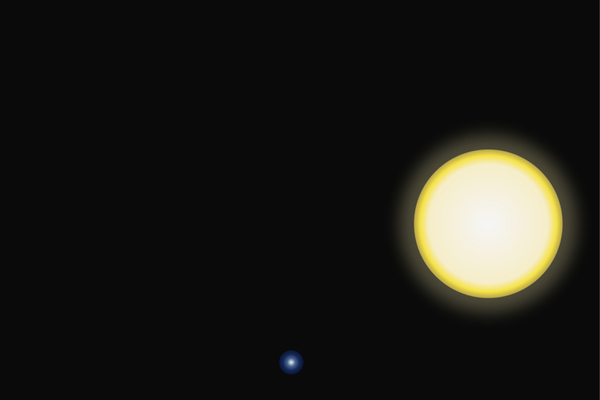Q: When will the Sun become a black dwarf?
Black dwarfs are the very last stage of Sun-like stars. Currently in its main sequence hydrogen-burning phase, our Sun has about 4.5 billion years left before it enters the next stage of its life, puffing up to become a red giant. As a red giant, the Sun will eventually burn not only hydrogen, but also helium. But after about 1 billion to 2 billion years, it will exhaust its supply of nuclear fuel entirely and its core will contract into a white dwarf made of carbon and oxygen, while the outer layers of its atmosphere drift away as a planetary nebula.
White dwarfs are roughly the size of Earth, but the Sun as a white dwarf will be about 200,000 times denser than our planet. These objects no longer burn fuel to generate light or heat, but because they start out hot — 10,000 kelvins or more — and have immensely high density, they continue shining with residual heat and cool slowly. It takes a white dwarf roughly 10 trillion years (nearly 730 times the current age of the universe, which is 13.7 billion years) to cool off enough that it no longer gives off visible light and becomes what astronomers term a black dwarf.
So, the Sun won’t become a black dwarf for trillions of years — and, in fact, no black dwarfs exist yet, simply because the universe has not been around long enough to allow even the earliest stars to reach this stage.










